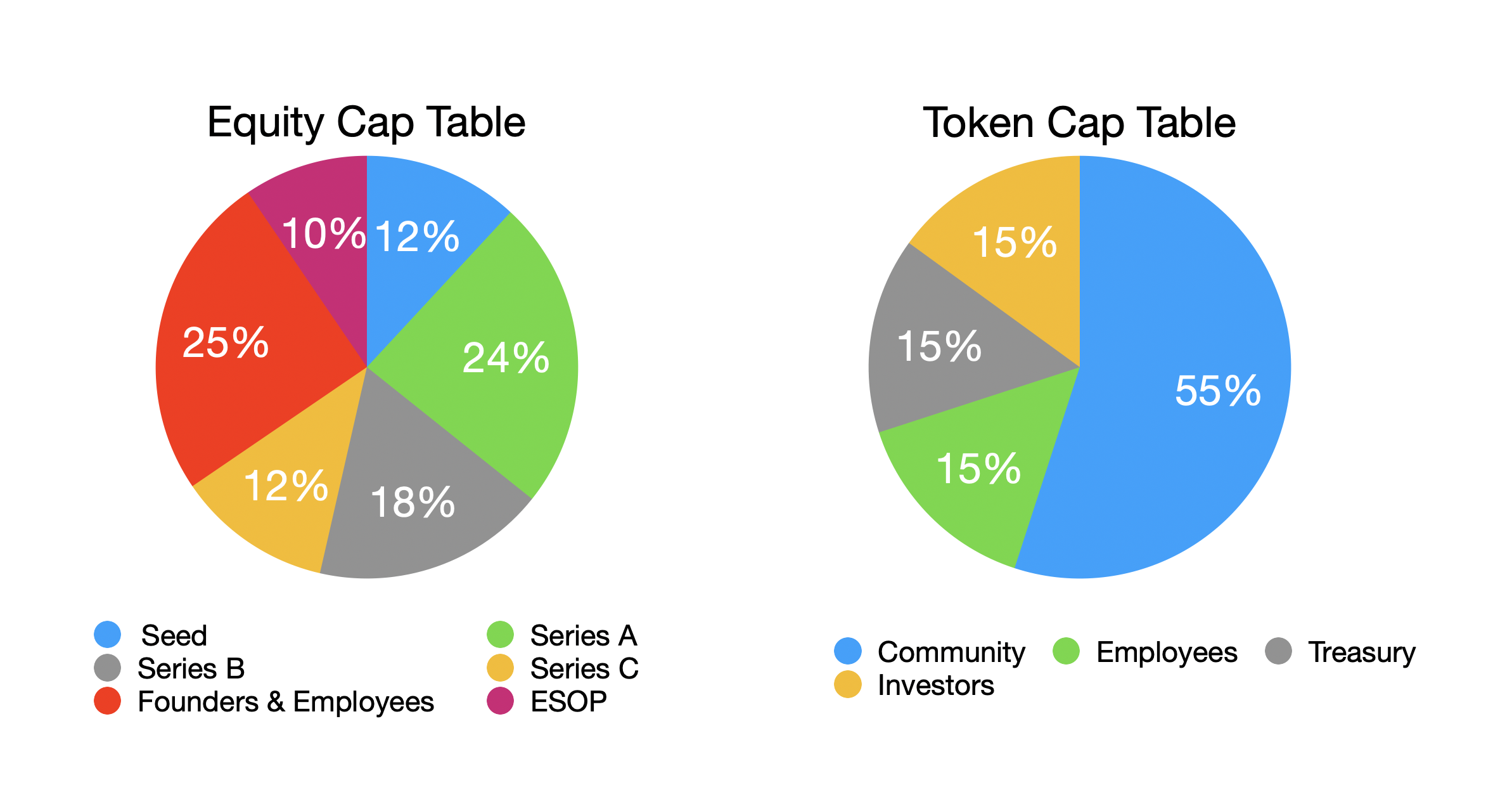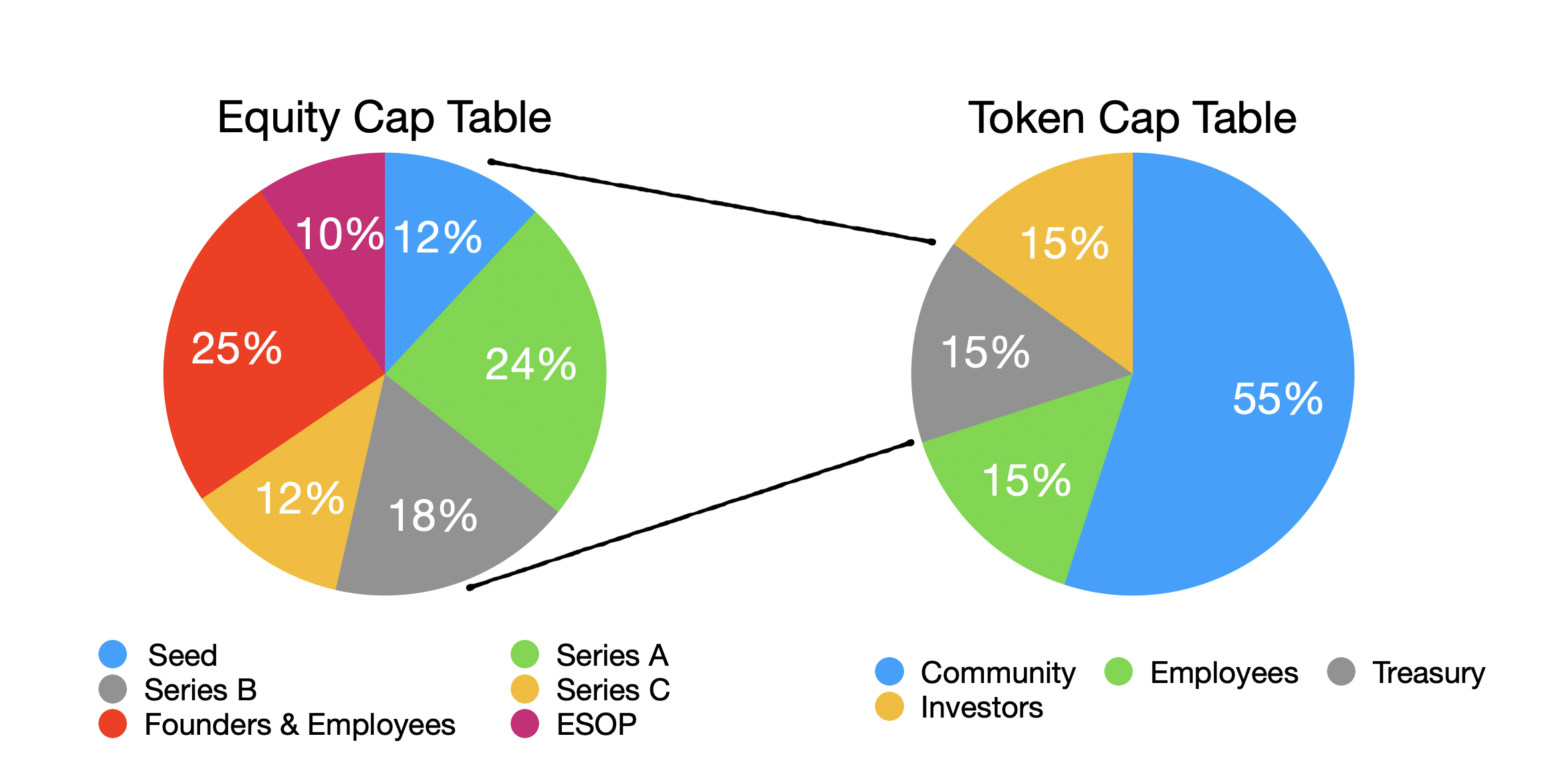Crypto companies that launch a token maintain two capitalization tables: equity and token cap tables. They are distinct but related.

Let’s look at a hypothetical crypto company’s cap tables. On the left, the cap table shows a company that has raised a Seed, A, B, and C rounds. In addition, there are allocations for the founders & employees, plus the Employee Stock Option Pool (ESOP) for new employee grants and retention grants.
On the right is the token capitalization table. 55% of tokens is reserved for the community. This figure has evolved quite a bit in the last five years but let’s peg it at 55% for now. That leaves 15% for employees and founders, 15% for the treasury, and 15% for investors. These aren’t universal numbers because the “standard” terms are still coalescing in the market.
Two things should jump out looking at the diagram.
First, the community allocation dominates the token cap table. The community tokens incentivize network participants (validators/stakers) to jumpstart network effects.
Second, crypto cap tables contain a new element not found in classic equity cap tables: the treasury. The treasury belongs to the foundation or corporate entity responsible for ongoing support of the project. The treasury captures tokens from the foundation’s efforts to participate in the community: running validators or stakers. Also, if the crypto company sells software/services to other crypto companies and receives payment in tokens, the token revenue generated from that relationship resides in the treasury.

The treasury’s ownership is typically dictated by the equity cap table and distributed pro-rata across the equity cap table. In this case, founders and employees own 25% of the equity cap table. Ergo, they would own 25% x 15% = 3.75% of the token cap table.
Those are straightforward observations from the diagram. However, there’s an additional question: how does the investor ownership in the equity cap table map to the investor ownership in the token cap table?
Most deals are bespoke. Investor token ownership rights may take the form of a warrant in which equity investors have the right, but not the obligation, to purchase tokens at a discounted price to market in an early round. Some structures discount the investors’ allocation by a negotiated percentage: e.g., 66% warrant coverage per equity dollar invested. Lock-ups and holding periods also vary quite a bit. They span a few months to several years.
Classic startup investing documents cohered around standards sometime in the late 2000s. The NVCA model documents and the YC standard SAFE documents.
Crypto companies are still iterating and testing the key business terms of community and investor rights. Once those have settled, we may see standard crypto term sheets. But we’re not there yet.